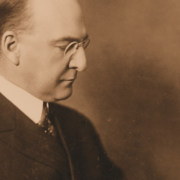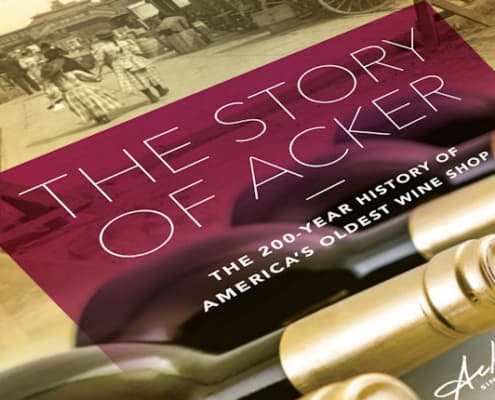Storytelling and Company History Books
What do most clients expect from a company history book? After 25 years and hundreds of discussions I think I have gotten an idea, even if the people I talked with had trouble putting it into words. A good place to start is to consider the evolving meaning of the word history.
When is a Story “History”?
In the original Latin, historia meant “inquiry.” So history is about asking questions, foundational questions as central to companies as they are to associations or educational institutions: how did we start out and why? How have we changed and why? What were things like for our predecessors and what should their experience mean to us today? History books have a reputation for getting bogged down in detail, but presented properly all of the particulars should help lift the narrative and drive it forward to answer these foundational questions.
By the middle ages historia had taken on a new meaning. The asking of questions was now assumed; the word now described how they were answered—in a story. Somewhere along the way people had figured out that all of these foundational questions involved change over time and that the best way to answer them was in a story with a beginning, a middle, and an end.
So a company history book, as clients understand it today, should be a good read, a narrative that unfolds in a manner that approximates the passage of time. That narrative has to be more than a fine tale though, it has to mean something. The corporate story has to help answer those questions about what we were like in the past and how we got to where we are today.
The fact that history is a true story, however, gives rise to a common misconception that if you do all the research and then line up the facts in order, the story will come out the same every time. It does not work that way. Instead, every historian is going to interpret—ask certain questions and tell distinct stories in different ways depending on their experience and their goals. A historian who specializes in science, economics, or politics, for example, will likely ask questions related to those fields and end up using the institutional story as a canvas upon which to paint a picture that reflects his or her own personal agenda.
My career has depended on doing something more fundamental—making sure that the interpretation revolves around the organization. Sure there will be coverage of larger, more transcendent subjects, but in the end they all have to contribute to a faithful representation of the corporation at a given point in historical time.
Implicit in the concept of interpretation, however, is the insight that all history is artifice—a deliberately constructed account of an infinitely complex and unknowable past that simplifies, reorganizes, and with luck, entertains and influences. Still, you can call it history if you construct your artificial narrative as best you can out of verifiable facts. Philosopher R.C. Collingwood described the process well when he insisted “the historian must re-enact the past in his own mind.” I approach the writing of a company history book as the process of re-enacting the past on paper. It is not easy to do. It demands the ability to conceptualize a story and employ strategies appropriate for turning your facts into narrative. It requires an ability to be creative and write engaging prose as well as a willingness to rewrite and revise.
Conceptualizing Company History
Everything starts with a concept. No one can write a good company history book without planning. Those who plan carelessly will only waste time fixing things later—or worse, not fix them at all.
The conceptualization phase is not a time for rigidity, you have to be ready to change your mind. Most institutions have a “received narrative” that has been handed down for years. This might be a good starting point or a working hypothesis, but in my experience, putting too much trust in it makes it easy to misinterpret your sources. Most importantly, my clients usually want a fresh story and you cannot build one out of old boilerplate.
I do not write a word until I have become familiar enough with my sources to create a narrative structure that makes sense and feels comfortable. It is not a matter of waiting for inspiration. I sketch out any number of alternatives with different emphases and varying numbers of chapters, filling up notepads until the structure seems to work. As I move from sketching the story to building an outline, I create titles and subheadings that convey the dynamic at work or encapsulate the story being told in each section. This helps me to think hard and abstractly about what the story means and thus, better know what I have to say.
Story Strategies
When it comes to actually writing the company history book there are a number of strategies that I use to guarantee that the story builds momentum, effectively drives home the points that I want to make, and leaves readers feeling they have spent their time wisely.
First, I keep introductions brief and do not give away too much of the story up front. You have to offer enough to get the reader hooked but withhold enough to encourage him or her to read on. I also want to save complex or crucial explanations for the time when the reader can best appreciate them—which is never right up front.
History is powerful because it recreates lives lived sequentially. I try to take advantage of that in conceptualizing the overall story of course, but I also try to develop chapters, paragraphs, and even sentences as mini narratives with a beginning, middle, and an end. One good way to do this is to create a “causal chain” (this happened, which led to this, which resulted in that). Our minds construct their own narratives out of remembered events, key decisions, and positive or negative outcomes. A good story does that too.
Similarly, millennia of myth and folklore have conditioned our minds to expect and to enjoy basic dramatic conventions like protagonists, antagonists, hubris, the quest, conflict, and resolution. I believe that it is appropriate to make use of these conventions so long as they fit the facts and not the other way around.
Quotations are also a conventional component of any company history. Amateurs usually overuse them—sometimes just to fill space, often because it relieves them from the difficult job of having to fully control their material. Professionals use quotations sparingly yet effectively to leaven the text with contemporary voices and to convey personality, but they do not hide behind them.
Last comes the conclusion. I keep it brief and do not include new information. The function of a conclusion is to reinforce the main point of the story and to give the reader a chance to reflect and make sense of what he or she has already learned.
Tactical Writing
Then there are the tactics: things that you should be constantly doing in order to produce high quality writing of any kind, including a company history book.
History’s distance constantly tempts authors to lapse into the passive voice. I use active voice whenever possible. Active writing is powerful, clear, and brief. I know that readers appreciate all three.
Because their work hinges on documentation, some historians get lazy and use up ink describing their sources and what is in them. It is better to rise above the sources and write about what was actually going on. Whenever possible I try to write about people doing things: whether working, playing, trying, failing, thinking, or dreaming. Writing about people (subject) doing things (verb) keeps your writing active. Plus, just as they appreciate dramatic conventions, readers enjoy understanding, admiring, or loathing, people from the past.
What distinguishes a professional historian is not knowing what to put in but what to leave out. By the time I am done researching I have usually got enough information to fill three or four books. I am selective with detail, giving the life story of central characters, but letting the walk-ons be one dimensional. Readers of a company history book want to know most about the people and events central to the story. I make them stand out by keeping the rest in the shade.
I also make it a point never to puncture the fourth wall. In theater, the fourth wall is the imaginary line between actors and audience. In writing you step beyond it with ponderous asides like “as mentioned previously” and soliloquies on sources. Most of the time readers know that the author is back there behind the page—the magic of good writing is to make them forget it for a while.
Rewriting Until Its Right
One of the best things about being a writer is that you get to revise until you get things right. It is surprising to me, therefore, that even experienced historians are reluctant to dig back into their copy. I have never worked with an author who wrote most things, let alone everything, fluently and powerfully the first time. We all owe it to the reader to rework our material, sometimes over and over, until it is effective as history and powerful as prose.
One of the toughest things to do is to cut. You spent all that time writing those paragraphs or those pages after all—why throw them out? Perhaps because another look makes it clear that the information is unnecessary. Things that seem important when we begin often turn out not to be, and everything in your book should be important. I have learned to cut ruthlessly and am seldom sorry I did. I reassure myself that producing all those unused pages was necessary to get to the ones worth keeping.
Even the writing that survives may not be in tip top shape. Imprecision drains writing of its power and meaning. Accumulated imprecision makes a book boring and pointless. One of the chief benefits of revision is that it allows me to think hard about every word I use. Is this an “issue” or is it really a “problem?” Did they “discuss” or really “debate?”
Far less frequently I realize during revision that I have left something out. Where did one character come from? Where did another character go? The biggest problem is when a causal chain that I have constructed is incomplete. Sometimes finding the missing information means not only doing new research but also revising the story. It was only after a few years as a professional historian that I discovered how much learning you do during the writing process: things you thought were important at first turn out not to be and things you dismissed early on sometimes rise to become vital.
Finally, as I near the end of the rewriting stage something important happens. I own up to the fact that I am (usually) the world’s expert on the history of the company that I am writing about. That makes it easier to do something that for most of us is difficult at first—to write confidently. If I am quite sure that something happened, I say that it happened. If I am not sure (and it matters) I say so and why. Readers will not believe what a reluctant or hesitant writer writes.
This is a lot to go through in order to write a company history book, but I believe that I owe it to the institution, the client, and especially the reader, to do it. All of these are lessons I have learned over years of writing corporate history. If you are already an experienced writer and historian, you might use some of these points to help improve your own work. If you are a potential client, the best news is that you need not go through this yourself.
Give me a call to discuss whether my approach to writing a company history book is suited for telling your story.




